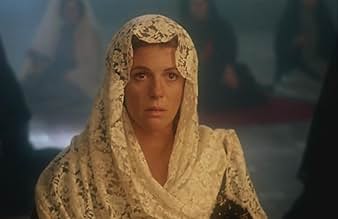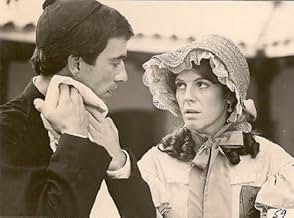Füge eine Handlung in deiner Sprache hinzuIn 1840's Buenos Aires, Argentina, a beautiful young socialite named Camila falls in love with Ladislao, a Jesuit priest. After several failed attempts at fighting his own feelings, he ultim... Alles lesenIn 1840's Buenos Aires, Argentina, a beautiful young socialite named Camila falls in love with Ladislao, a Jesuit priest. After several failed attempts at fighting his own feelings, he ultimately succumbs to her. The two later escape to a far off, secluded village where they assu... Alles lesenIn 1840's Buenos Aires, Argentina, a beautiful young socialite named Camila falls in love with Ladislao, a Jesuit priest. After several failed attempts at fighting his own feelings, he ultimately succumbs to her. The two later escape to a far off, secluded village where they assume new identities as husband and wife and begin running a children's school. After several... Alles lesen
- Regie
- Drehbuch
- Hauptbesetzung
- Für 1 Oscar nominiert
- 2 Gewinne & 2 Nominierungen insgesamt
Empfohlene Bewertungen
Camila finds that she is not attracted to the macho rich suitors but instead finds herself drawn to the new Jesuit priest. Despite common sense and many obstacles, they run off together. What I found most interesting in the movie was the character of her father, who was instrumental in tracking them down and exacting punishment.
In many ways, the plot reminded me of The Thorn Bird mini-series combined with a fascist-like backdrop. A pretty good film overall. Be aware, however, of the nudity. It's NOT as much as you might expect in such a film but considering he's a priest, it's bound to offend some.
Camila refers to Camila O'Gorman, and opens very briefly in her childhood with the arrival at her family's ranch of a stagecoach bearing her grandmother, who is to be placed under house arrest. Camila's father fully consents to the arrangement, siding with the authorities rather than with his mother, who is on the wrong side of contemporary political affairs. The opening then shifts forward to Buenos Aires, 1847. Camila, now a young woman of about 19, is closeted with and huddled over some newborn kittens she knows will earn her father's disapproval if he discovers them. In the late 1840s, Argentina is under the control of a dictator, General Rosas, and the federals. The unitarians, some in exile and others trying to stay under the radar (as it were), are the latent opposition.
The plot can be summarized simply: A socialite daughter from a wealthy family falls in love with a (celibate) Jesuit priest. It is not only taboo in a Catholic society, but is taboo in a Catholic society at the wrong place and the wrong time, and neither the federals nor the unitarians contribute positively to the outcome. As the kittens meet their fate and the opening credits conclude, we view a statement dedicating the movie: "In memory of Camila O'Gorman ." History, and director Maria Luisa Bemberg, are serious about the advisory, so be forewarned, and be aware also that the movie has an R rating. The film coloring is memorable, and Susu Pecoraro in the lead actress role gives a strong performance.
Wusstest du schon
- WissenswertesThis is the second Argentine film to be nominated for an Academy Award for the 'Best Foreign Language Film' in 1985.
- Zitate
Ladislao Gutiérrez: I'm listening, Camila. Talk.
Camila O'Gorman: I'm dying of love, father.
- VerbindungenReferenced in There's Nothing Out There (1991)
Top-Auswahl
- How long is Camila?Powered by Alexa
Details
Zu dieser Seite beitragen































